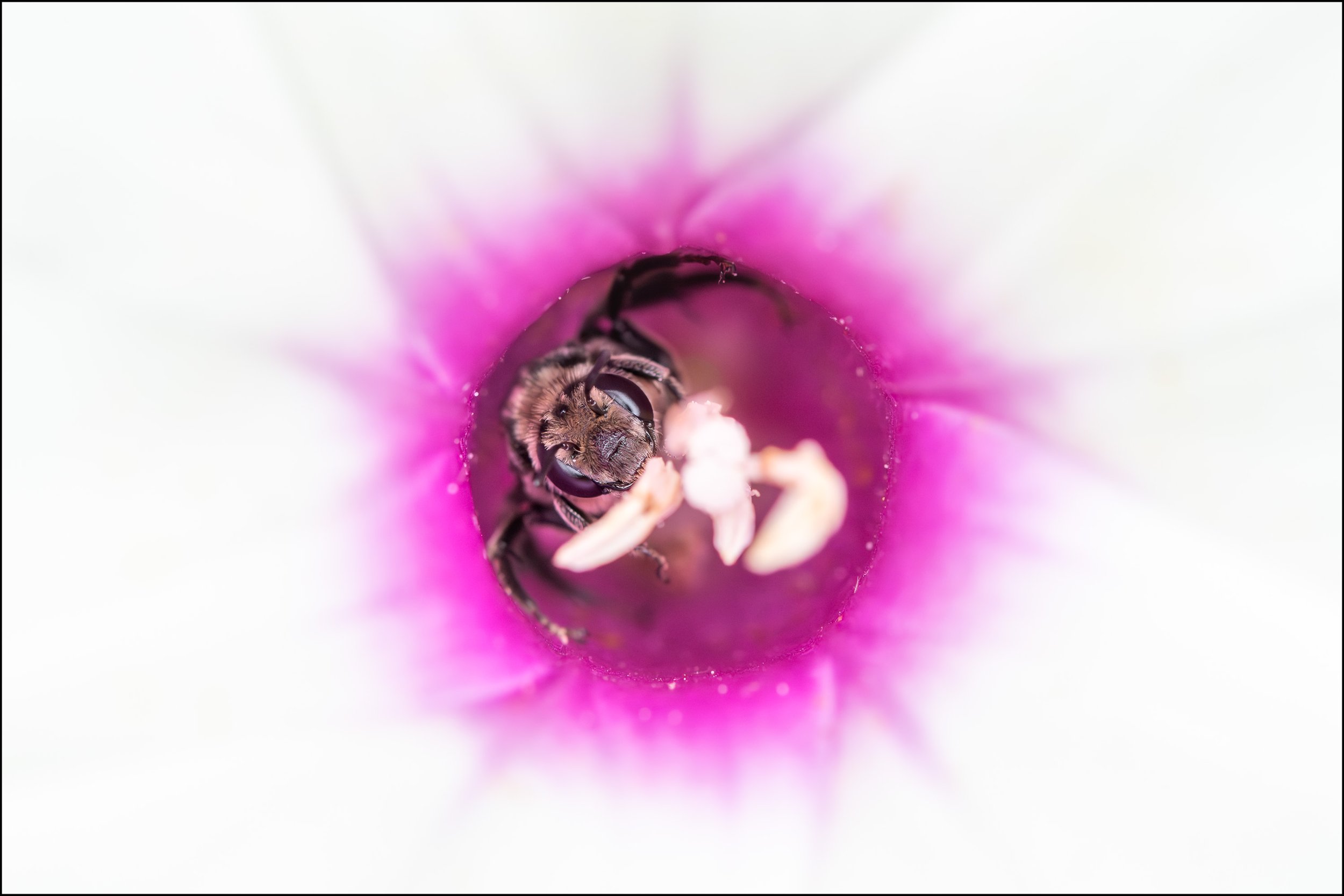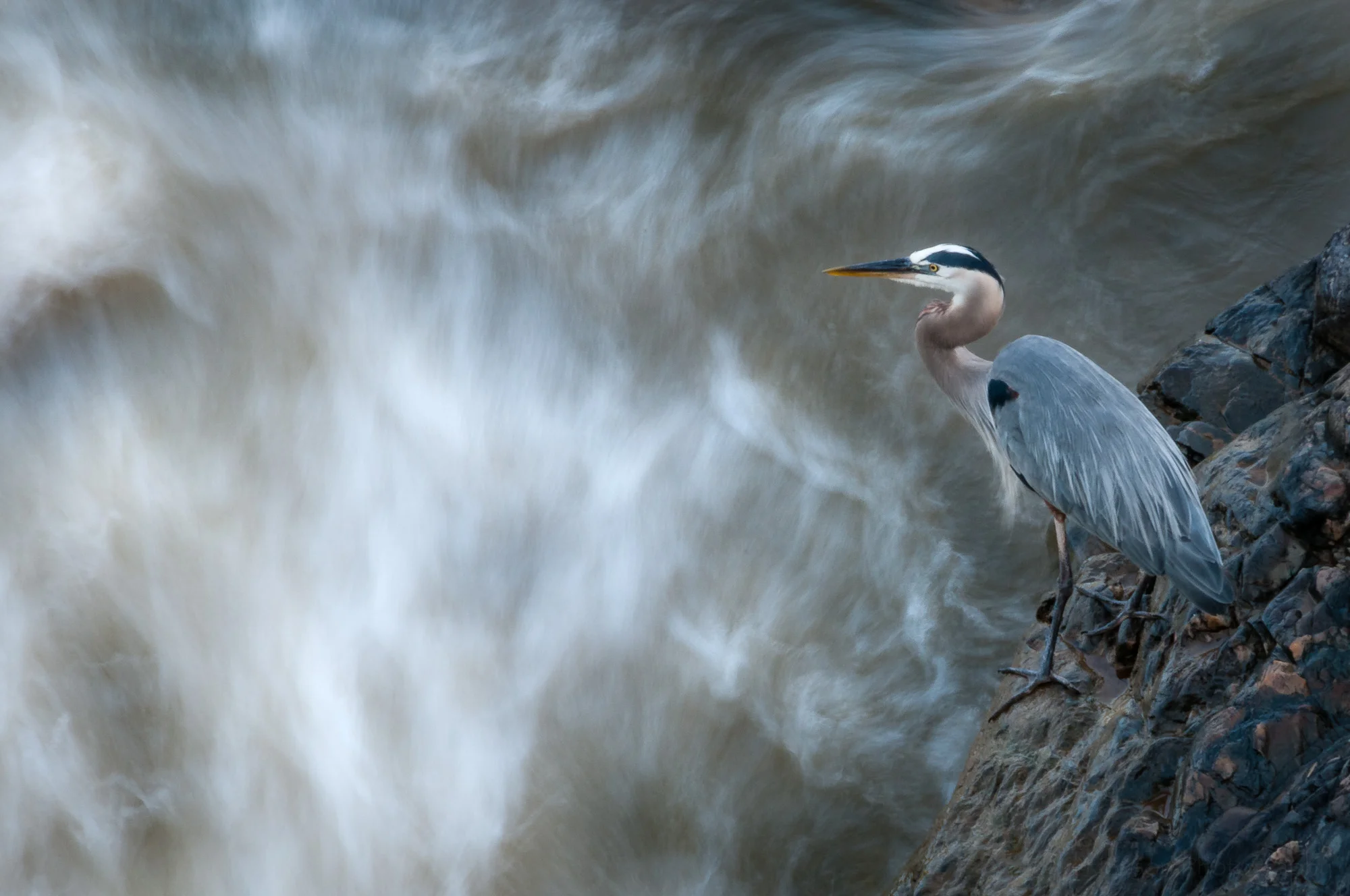Canal Falls
I was introduced to this scene by a friend many years back. It’s located along a canal and shows the falls between two levels. The key to this photograph was the long exposure, 15 seconds in this case. It allowed the water to blur, giving it that nice milky look as it goes over the rocks. It also lets the water at the bottom begin to swirl and flow into a circular pattern.
Ideally I would have liked more of the swirling water at the bottom, but on this day there was a lot of very slow moving foam just out of view that didn’t look very appealing, so I framed the image without it. Perhaps a slower shutter speed could have blurred the foam enough to include it, but I didn’t have a neutral density filter with me that day. I achieved the 15 second shutter speed by setting my ISO to the lowest setting (ISO 200) and closing down the aperture all the way (f/36). Thankfully it was an overcast day so I didn’t have to worry about harsh sunlight creating extreme contrast or blowing out the highlights in the water.
I’m thankful to my friend for showing me this peaceful and beautiful location that I might have otherwise overlooked.
Do you enjoy these posts?
Sign up to receive periodic emails with updates and thoughts. Don’t worry, I won’t spam you. And please consider purchasing artwork or products from my online store, and using my affiliate links in the sidebar to the right when shopping online.
I appreciate your support!



























